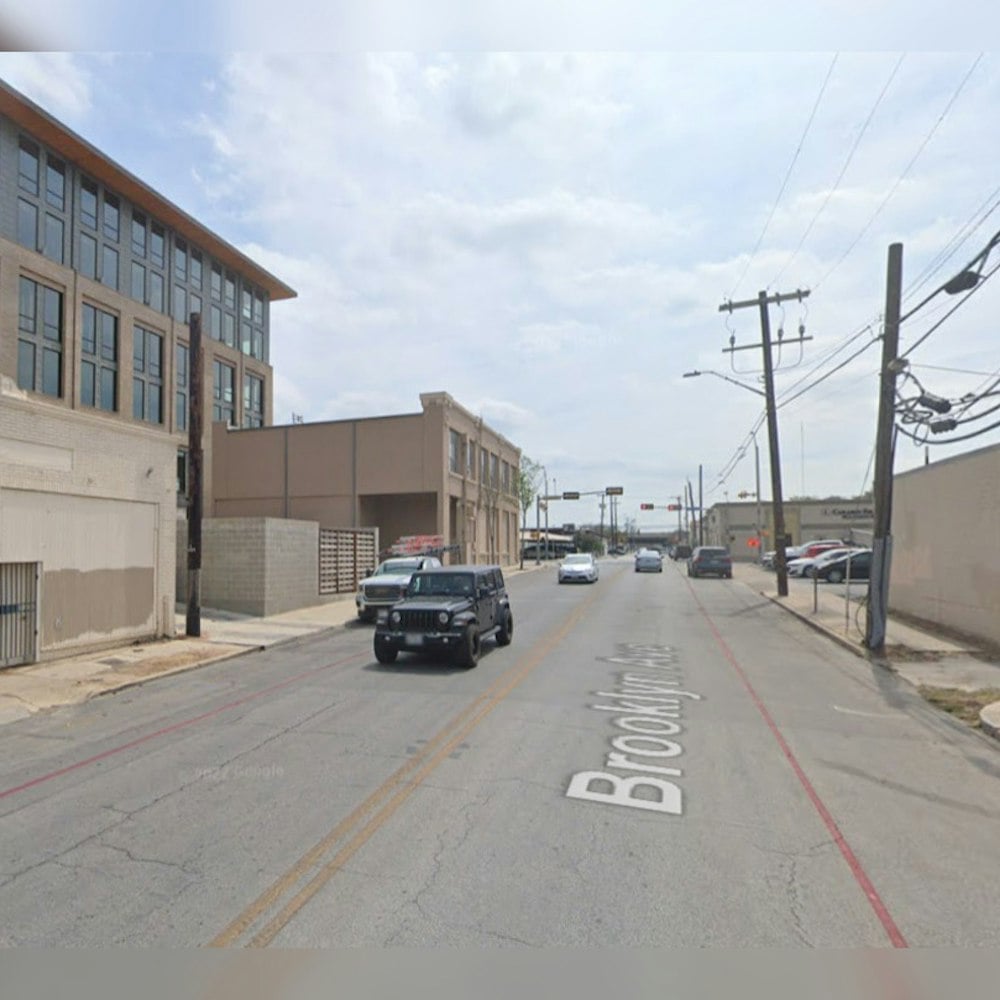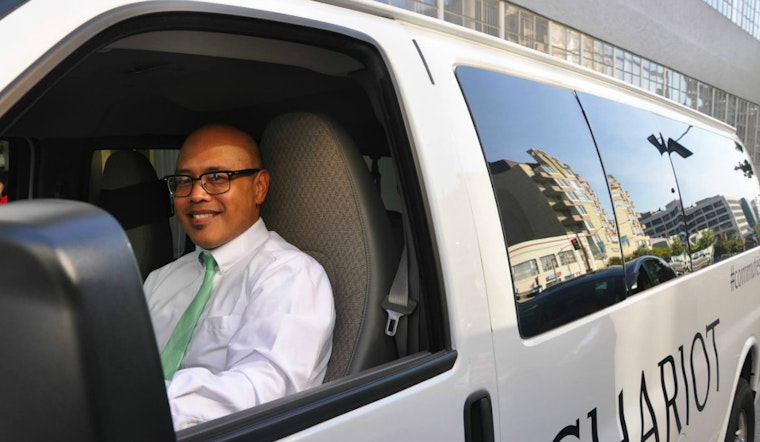
Van commuter service Chariot might not have beat the N-Judah inbound from Cole Valley, but it has established a foothold between public transportation and rival private services like UberPool and Lyft Line, serving those heading from western and northern city neighborhoods to downtown offices and regional transit stops.
Now, the San Francisco startup is adding a reverse commute to the mix. Routes will now also start at their existing terminuses downtown and in SoMa and end in residential neighborhoods. The point is to pick up riders coming into the city from the East Bay and the Peninsula in the mornings and leaving in the evenings.
Beginning this week, all eight of Chariot’s existing routes will ferry commuters from BART and Caltrain to neighborhoods like the Marina, Pacific Heights, the Haight, and more, which Chariot chief executive Ali Vahabzadeh describes as “underserved by public transportation.”
But the company still faces a major obstacle: perception. Even though Chariot does not consider itself a luxury transportation option, it's been viewed as similar to the commuter buses from Google, Facebook and other tech companies. Chariot and its now-shuttered competitor Leap have been criticized by many (including our commenters) for creating a two-tiered transportation system: sleek shuttles for rich tech workers, and inefficient public transit for everyone else.
Given the dangers of such a perception, many competitors in the space have folded or taken a different tack. TechCrunch calls Chariot the “last bus startup standing.”
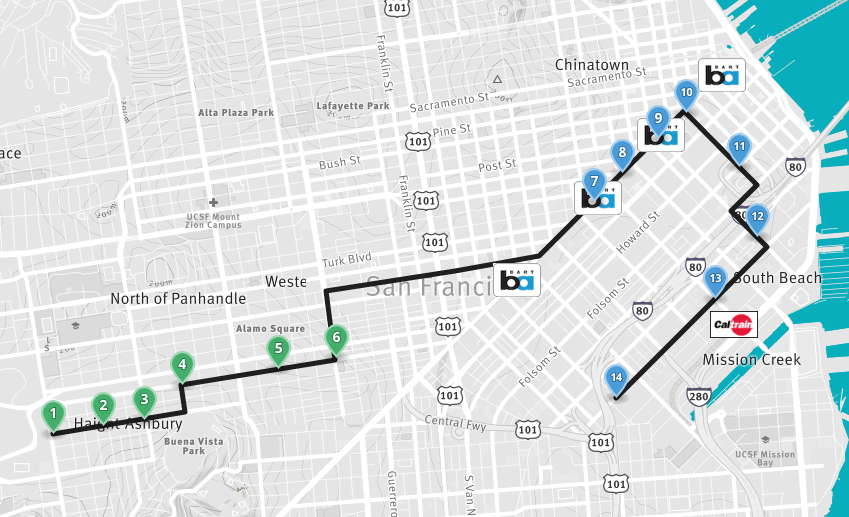 The Nov. 2nd Haight route, inbound with green as pick-up spots and blue as drop-offs, via Chariot's site.
The Nov. 2nd Haight route, inbound with green as pick-up spots and blue as drop-offs, via Chariot's site.
Since 2014, Chariot has focused on shuttling workers from outlying neighborhoods to downtown offices and BART/Caltrain stops. The latest version of its Haight route launched on November 2nd.
It's also trying to counter its perception as a tech shuttle with a route aimed specifically at non-tech workers: the Fisherman’s Flyer, which ferries tourism workers from BART to Fisherman’s Wharf. The route was created after the Fisherman’s Wharf CBD approached Chariot, because people who lived in the East Bay and worked at the Wharf were having trouble getting to work via existing transit options.
The competition in Chariot's space is stiff, with Muni, biking, Uber/Lyft, taxis/Flywheel, and more in play. Chariot’s director of communications, Michelle Fitzgerald, said the company has differentiated itself by being faster than UberPool or Lyft Line, and competitive with Muni on price, especially when paid for with pre-tax commuter benefits.
While Muni costs a flat $2.25 for a one-way trip anywhere in the system, private services charge varying rates based on time, distance and demand. Uber’s UberPool ride-sharing service sent an automated email yesterday, for example, advertising that it could take one Hoodline reporter from the Haight to Potrero Hill for a little under $5.
Chariot stays close to riders, asking customers to suggest, vote on and essentially crowdfund potential routes into existence. The company tweaks its routes regularly, sometimes within 48 hours of noticing a problem.
For those who buy a 30-day unlimited pass and pay for it with pre-tax commuter benefits, Chariot's cost-per-ride can be as low as $2.11, assuming one rides 10 times per week. Overall, however, $3.50 seems to be the average price per ride. It's what Chariot quotes on the comparison charts they've created to promote the service, which we’ve provided for reference below. (There's more info on their methodology at article's end.)
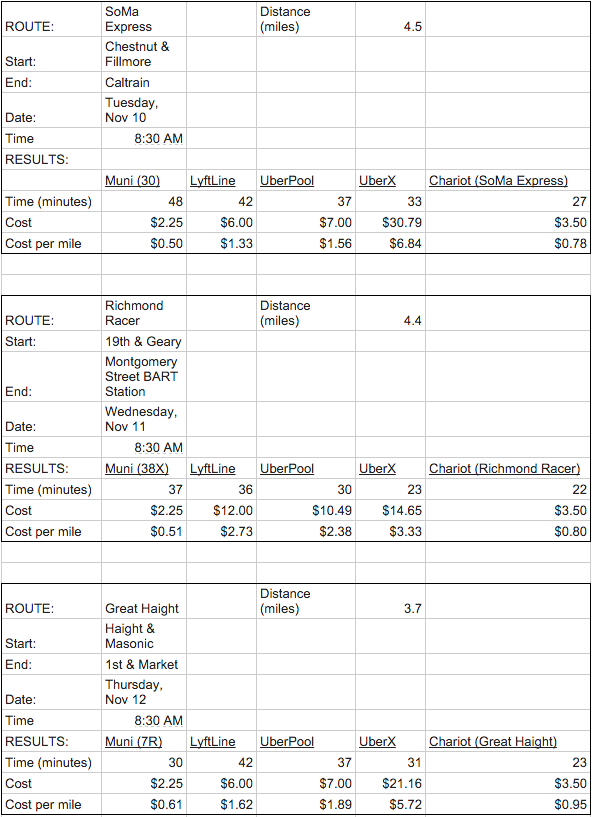 Charts via Chariot.
Charts via Chariot.
The idea for Chariot came about in 2010, when Vahabzadeh was living in the Marina and commuting to SoMa. He found that Muni buses were slow and overcrowded, while taxis and Ubers were too expensive to use every day. Frustrated, Vahabzadeh moved to the Mission and began biking to work.
Years later, he returned to the Marina and found the commute no better. In April 2014, Vahabzadeh launched Chariot’s first route, the Chestnut Bullet, between the Marina and SoMa, using four rented vans.
Today, Chariot runs eight routes, using 70 Ford Transit vans. The company says it provides 11,000 rides to 2,500 riders each week.
While Leap charged high fares on luxurious buses that sold hot drinks and snacks, Chariot is “not about the bells and whistles,” Fitzgerald says. She adds that Chariot made an effort to work with the city before it ever hit the road, unlike Leap, whose troubles and eventual bankruptcy came partly as a result of clashes with regulators.
“We weren’t cowboys about launching our service,” she explains. “We played by the rules, and made sure the city knew what we were doing.”
Chariot drivers also work full-time. The leading private-car services rely on contractors— a practice that has prompted ongoing scrutiny from regulators.
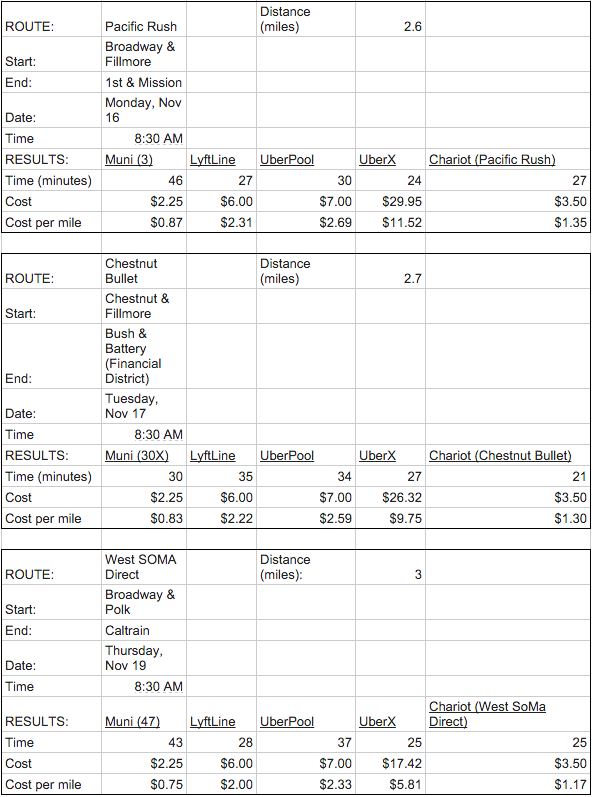 Charts via Chariot.
Charts via Chariot.
As Chariot expands, it will face challenges. In addition to perception issues, gas prices can also impact the bottom line. Today, the company’s vehicles run on gas and diesel, but they’re keeping an eye on the electric-van market, Fitzgerald says. In the meantime, “we have strategies to lock in gas prices at lower rates.”
Transportation companies and others could see their businesses suffer if there is another tech bust and subsequent decline in commuting, as some are predicting. But Fitzgerald claims that the company would be able to survive because its riders are “a really good cross-section of San Francisco commuters,” not just tech workers.
“We transport teachers, creatives, attorneys,” she says. “Even in an economic downturn, people still need to go to work.”
 An overview map of the eight routes today, via Chariot's site.
An overview map of the eight routes today, via Chariot's site.
UC Berkeley shared-transportation expert Susan Shaheen says that private micro-transit services like Chariot can help the overall transportation system.
“Providing people with choices and options is essential to providing people with an alternative to private vehicle ownership,” she says. With a variety of apps on their phones, people can choose how to get around each day, whether by bike, bus, van, car, or scooter, she adds.
Here's how Chariot tells us it calculated the above charts:
Editor's note: We've clarified that the meaning of "reverse commute" is relative to Chariot's existing routes in San Francisco.In terms of how tests were conducted, they are admittedly limited in scope. Each test was one-time. For each test, 4 people met at the designated spot and started their commute at the same time (8:30am), each using a different method of transportation (Muni, Lyft Line, UberPool, UberX). Each person timed his commute using the stopwatch function on his phone. The Chariot data we are able to get internally via our tracking system.
We specifically only tested Monday-Thursday, as Friday traffic is not necessarily indicative of the rest of the week. And while transportation times could vary, we felt this was minimized by testing all travel methods at exactly the same time — a heavy traffic situation, police activity, or outside event would be felt by all participants.

